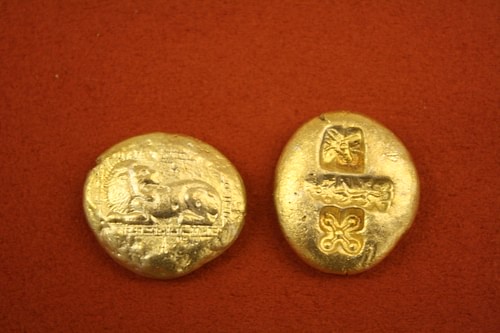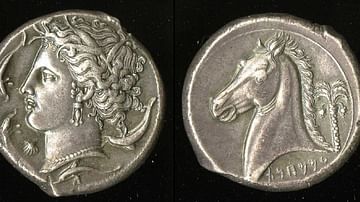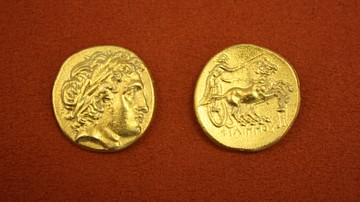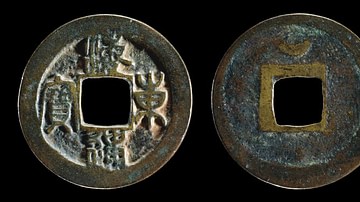
Coins were introduced as a method of payment around the 6th or 5th century BCE. The invention of coins is still shrouded in mystery: According to Herodotus (I, 94), coins were first minted by the Lydians, while Aristotle claims that the first coins were minted by Demodike of Kyrme, the wife of King Midas of Phrygia. Numismatists consider that the first coins were minted on the Greek island of Aegina, either by the local rulers or by King Pheidon of Argos.
Aegina, Samos, and Miletus all minted coins for the Egyptians, through the Greek trading post of Naucratis in the Nile Delta. It is certain that when Lydia was conquered by the Persians in 546 BCE, coins were introduced to Persia. The Phoenicians did not mint any coins until the middle of the fifth century BCE, which quickly spread to the Carthaginians who minted coins in Sicily. The Romans only started minting coins from 326 BCE.
Coins were brought to India through the Achaemenid Empire, as well as the successor kingdoms of Alexander the Great. Especially the Indo-Greek kingdoms minted (often bilingual) coins in the 2nd century BCE. The most beautiful coins of the classical age are said to have been minted by Samudragupta (335-376 CE), who portrayed himself as both a conqueror and a musician.
The first coins were made of electrum, an alloy of silver and gold. It appears that many early Lydian coins were minted by merchants as tokens to be used in trade transactions. The Lydian state also minted coins, most of the coins mentioning King Alyattes of Lydia. Some Lydian coins have a so-called legend, a sort of dedication. One famous example found in Caria reads "I am the badge of Phanes" - it is still unclear who Phanes was.
In China, gold coins were first standardized during the Qin Dynasty (221-207 BCE). After the fall of the Qin dynasty, the Han emperors added two other legal tenders: silver coins and "deerskin notes", a predecessor of paper currency which was a Chinese invention.








